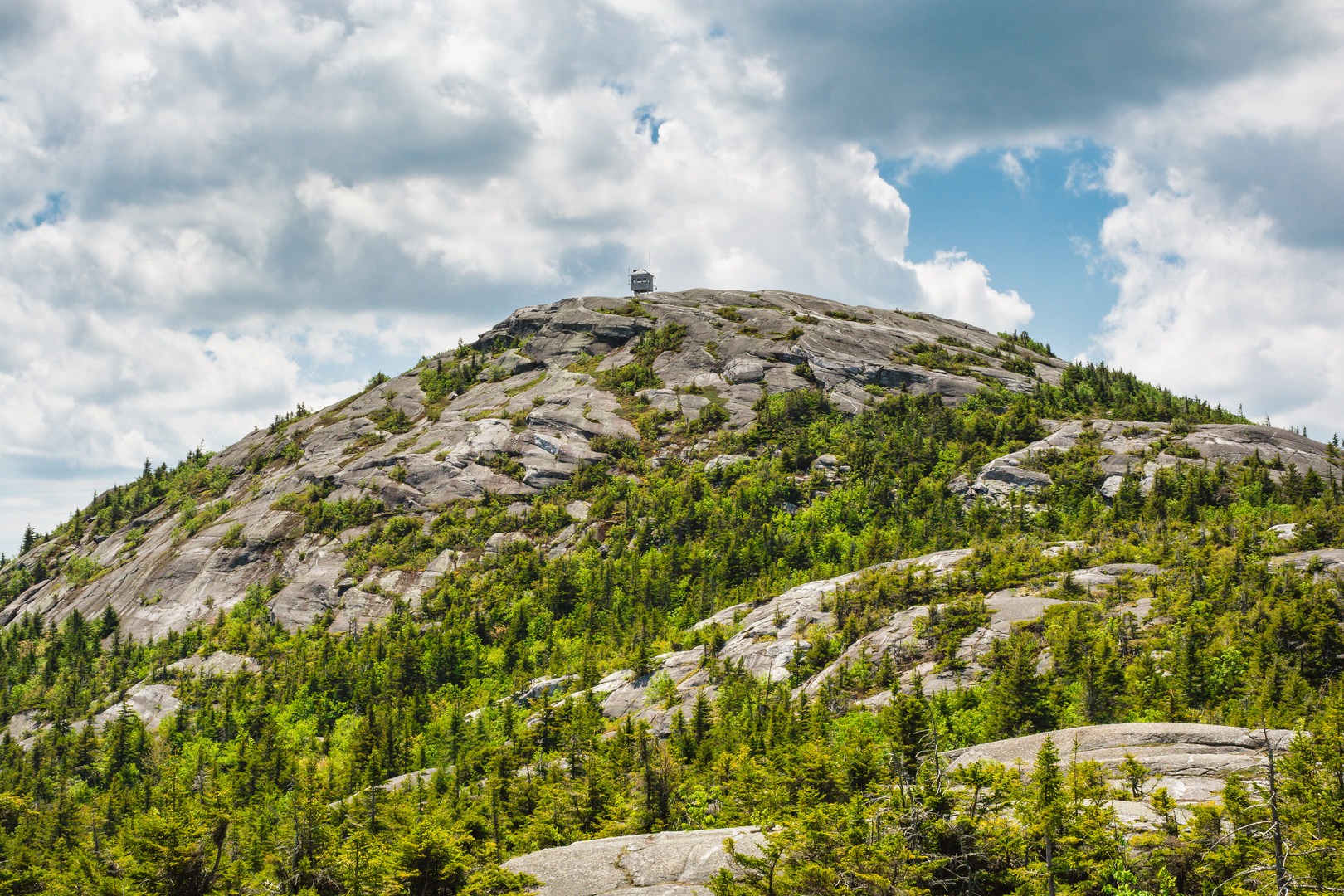Cardigan Mountain State Park is a local favorite, providing magnificent views from its network of trails to and along the ridge.
A seasonal dirt road brings you to a parking area with picnic tables and a small pavilion. There is no potable water or campground, and the park is known mainly for its hiking trails. There’s no required fee to recreate here; however, there is a box for donations to help maintain state park property and trails.
The 1.5-mile-long West Ridge Trail leaves from the parking area and is the most direct route to the top with 1,200 feet of elevation gain. An alternate, longer trail to the summit is the South Ridge Trail, which splits off from the West Ridge Trail a half-mile from the trailhead. Hikers looking for a steep approach can consider the Holt Trail.
As you near the summit, you’ll notice the footing turns to solid granite and views start to open up around you. This once-wooded summit burned in a large forest fire in 1855, which set the stage for the 360-degree view and the sparse vegetation seen here today. The summit area on Mount Cardigan hosts a subalpine zone, where many of the plants, lichen, and mosses encountered here are fragile and prone to damage by hikers. During your time at higher elevations, try walking only on rocks and avoid stepping on vegetation in an effort to protect rare plants for future generations. A wooden fire tower once stood on Mount Cardigan’s summit, but now you’ll find the metal observation tower that was erected in 1924.
For the adventurer wishing to extend their hike, continue north along the ridge on the Mowglis Trail to Firescrew Mountain, Hanging Ledges, and Grotto and Cilleys Caves. From the summit of Mount Cardigan, the South Ridge Trail leads south to South Peak and Rimrock, providing for a loop hike option, or continue onto the Skyland Trail to Mount Gilman.
Cardigan Mountain State Park trails can also be accessed from the east side of Mount Cardigan, at the Appalachian Mountain Club’s Cardigan Lodge. Cardigan Lodge provides a base camp for anyone looking for a longer stay in the area.
During the winter, the seasonal access road is closed, but a small parking area near the gate allows hikers to walk the road and access the trails even when there’s ice and snow. Occasionally, the trails close for mud season in the spring, indicated by a sign at the trailhead.
























Comments
Sign In and share them.